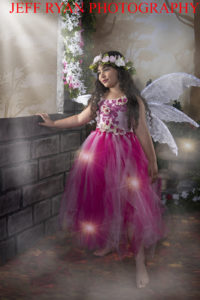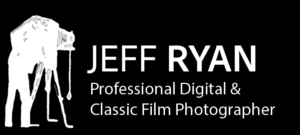OTTAWA FAIRY PHOTOGRAPHER, OTTAWA GRADS, PROFESSIONAL STUDIO PORTRAIT PHOTOGRAPHY, TINKERBELL, #CITY OF OTTAWA, ENCHANTED FOREST FAIRIES, EY CENTRE EXHIBITOR, OTTAWA LIVING LIFESTYLE, OTTAWA GRADUATION PHOTO STUDIO,
JULY 2023
*FOR READERS SITUATED IN MY #CITY OF OTTAWA, I WOULD ENCOURAGE YOU TO VISIT MY WEBSITE AND VIEW THE “STUDIO SPECIALS” THAT WE OFTEN HOST.
CHILDREN’S FAIRY PORTRAITS ARE CURRENTLY ON SALE! 🙂 🙂

LIGHT METERING
Hello Ladies & Gentlemen:
Before I begin this months article, I would like to “Thank You” for your kind remarks pertaining to my photography/blog articles. Your comments have been sincerely appreciated and I most definitely wish to extend my thanks to you the reader for your favourable opinions on my levels of instruction/guidance. As mentioned, being a teacher of photography for several years, and having to answer rather extensive questions from my students on a frequent basis, is what lead to the procreation of this blog. I do not reply to all word press comments due to a lack of time but would like to say here and now that even though I might not provide a response to your comment, I have received it and I am always grateful. So “Thank You Again” to all of you! It appears I have a very good crowd of sincere readers.
Now……..let me discuss some information about your light meter which I shared with someone recently which was to their benefit. I hope you read this article and not just dismiss it because many people are truly not well versed in the functionality of their light meters, particularly in the more sophisticated SLR cameras being either film or digital. This might be what some call a “dry topic” but stay with the article which is not overly long but brief in nature. It is always my intention to help you.
ARTICLE
One never knows when the opportunity to discuss photo related topics will appear, and recently on an early morning walk, I met up with an individual who we’ll call Jane trying to photograph birds from a bridge. This is where our story begins. I hope you benefit from this and as always, it is my wish to expand your capacity in photography so you will feel comfortable making changes in your habits and exploring new methods of applicable photo related methods/education.
The early morning sun had just risen roughly 20 minutes prior to my arrival at a bridge and the light was changing constantly. The first subtle hi h ousands of what appeared to be tiny lights on the top of each blade of grass. The back light effect was just mesmerizing. One could almost describe this effect as a person standing on a cliff looking off at a cityscape during nighttime with it’s street lights illuminating the area.
I arrived at the bridge and met this camera enthusiast and after exchanging hellos it lead me to questioning what was her topic of interest. She went on to say she had recently purchased this new Nikon camera, and was using its zoom lens feature liberally to become accustomed to it’s features. She also commented on the various portrait modes that were included and came to the conclusion that she must be doing something wrong with her camera since so many exposures appeared to be either too dark or light. I began a review of her camera settings and checked the metering controls to see if they had been altered and were perhaps set up incorrectly. I realized at this point that her camera contained three methods of metering light, and I asked if she had experimented with all of them. Her answer, like so many people I have spoken to over many years was, no.
Ladies & gentlemen, I would like to provide you with some knowledge regarding your light metering systems that can truly be very beneficial to you when faced with awkward light metering situations.
Firstly, a large variety of good quality cameras these days come equipped with an excellent light metering system, that can be adjusted to three different light metering categories. In other words, your cameras light meter can be set to three different modes of measuring light to provide you with a more accurate and predictable final exposure. Let’s take a look at these three meter settings in your camera and break them down for you, one by one. After you read this article and digest it’s contents, you will be well on your way to achieving much better photographic results!
MATRIX METERING
*A brief history on matrix metering for you: When Nikon’s matrix metering was introduced as “Automatic Multi-Patter” (AMP) metering in their FA camera in 1983, it was the world’s first meter that actually measured exposures, instead of just light. It is one of the most important advances in photographic technology. This meter knows how to make whte snow or sand look white, instead of conventional through the lens light meter’s making everything look 18 % grey in tonalilty which is what many meters are calibrated to record. When photographing under rushed circumstances, many people agree that the matrix meter is the best way to meter your exposures assuring better levels of consistency. The camera meters a wide area of the frame and sets exposure according to tonal distribution, colour, composition, and distance for results close to those seen by the naked eye.
Matrix/Multi metering is the camera metering mode set by default in most digital cameras and it works “pretty well” in all general light situations. The main drawback of this metering mode is that your camera can “underexpose or overexpose” the scene when there’s a predominance of black or white in the viewing area. Instead of assuming the centre is the most important area in a photo, evaluative (matrix) metering takes into account things like where you’ve placed the focus point and what else is in focus.
Now…..returning to Jane’s exposure concerns about over and under exposure, she often finds herself in locales, such as forestation for instance, containing large areas of bright and dark patches. This type of situation can be difficult to expose for correctly because the meter, although sophisticated in design, has to make an educated assumption of calculating all these various areas/tones/brightness levels and coming to a correct exposure. Since Jane has experienced difficulty with her exposures, this is an indication that she should be changing the current light meter setting that her camera is set at, to a different version of light measurement. When using your camera in matrix mode which in general is an overall exceptional meter, you should consider accessing the other two metering systems in the camera.
*Why I am going to discuss these other metering systems below is to save you time at your computer following your photo session, altering poor exposures. Lets identify the other two metering systems in your camera now which are very beneficial to have.
CENTRE WEIGHTED LIGHT METERS
This metering system is one I have used for literally hundreds of thousands of exposures over a period of 40 years. It is a reliable meter that produces predictable results. It has a tendency to place approximately 70% of it’s sensitivity from the centre of your viewfinder outwards depending upon each camera manufacturer. This sensitivity from the centre of your viewfinder outwards means that when metering a scene or a persons face, you should place your main object/subject fairly close within the centre of your viewfinder when taking a meter reading. Once you have this reading, lock this exposure in and you can move your camera slightly left or right to alter your composition should you wish to adjust for a slight variation in your composition. (Locking your exposure in means this: typically, a person will depress the shutter release gently which activates the light meter. Once you have obtained this meter reading, continue holding/depressing the shutter release gently which will memorize this meter reading while you adjust your camera to another composition. Once you have decided on a slight change in composition, fully depress the shutter release which at this point will “take the picture” for lack of better words at the locked in exposure setting). The idea here is; you point your lens so it can meter off the main object in your viewfinder giving you an exact shutter speed and F-stop combination to set on your camera ensuring a well exposed frame.
When changing from one light meter setting to another, you will notice differences initially on the back of your cameras viewing screen. This is normal and it is only a matter of getting used to how a center-weighted meter interprets light as opposed to matrix systems. The more you experiment, the better you get and it doesn’t take much time before you become well versed in operating all 3 light metering systems. Now, let’s move on to Spot metering.
SPOT METERS
Once again, this type of meter like the centre weighted metering system is often included in a better quality camera. Spot meters typically come in various styles. They can be either a separate hand held meter, or one that is built into your camera. Spot meters are also available as regular daylight meters “and” electronic flash meters. They are most often set up to be a “one degree meter, or a five degree meter”. When you do a comparison of the visual area that a matrix meter and centre weighted meter covers, a spot meter is an absolutely precise tool for the most accurate exposures possible.
Let me take this opportunity to fabricate a photographic situation when a person would use a meter of this design. The following is an example of providing you with excellent exposures.
Let’s say the late afternoon sun is declining and you wish to photograph a person with their back facing the sun. This means, that their face is naturally facing the camera. Light meters will frequently underexpose a scene of this nature due to the extremely bright areas surrounding the person. This is where a spot meter excels. Aim your camera at the persons face and take a spot reading off of their face itself. The reading obtained here will be remarkably precise. No extraneous light from other areas will affect this reading. Another advantage to using a spot meter particularly under this type of lighting condition, is that with other types of meters, you would frequently have to walk right up to the persons face to measure/obtain the light reading. With a spot meter, you can remain quite far away from your subject, meter off of their face and follow the exposure recommendations.
The next time you are outdoors creating imagery, try switching your cameras metering modes to the above recommendations. These metering modes have been incorporated into your camera for a reason and should be accessed frequently to benefit your picture making sessions. Don’t be discouraged if you are surprised initially at the variation in exposures. As mentioned, it will not take you long to be acquainted with the operation of all three metering techniques.
Thank you for being here and have fun with your photography! It is always a pleasure to help you along your photographic journey.
*For readers situated in my city, Ottawa, I would encourage you to visit my website and view the “Studio Specials” that we often host! CHILDREN’S FAIRY PORTRAITS ARE ON SALE!
With Good Wishes Extended,
Jeff Ryan Photography
www.jeffryan-photography.com
